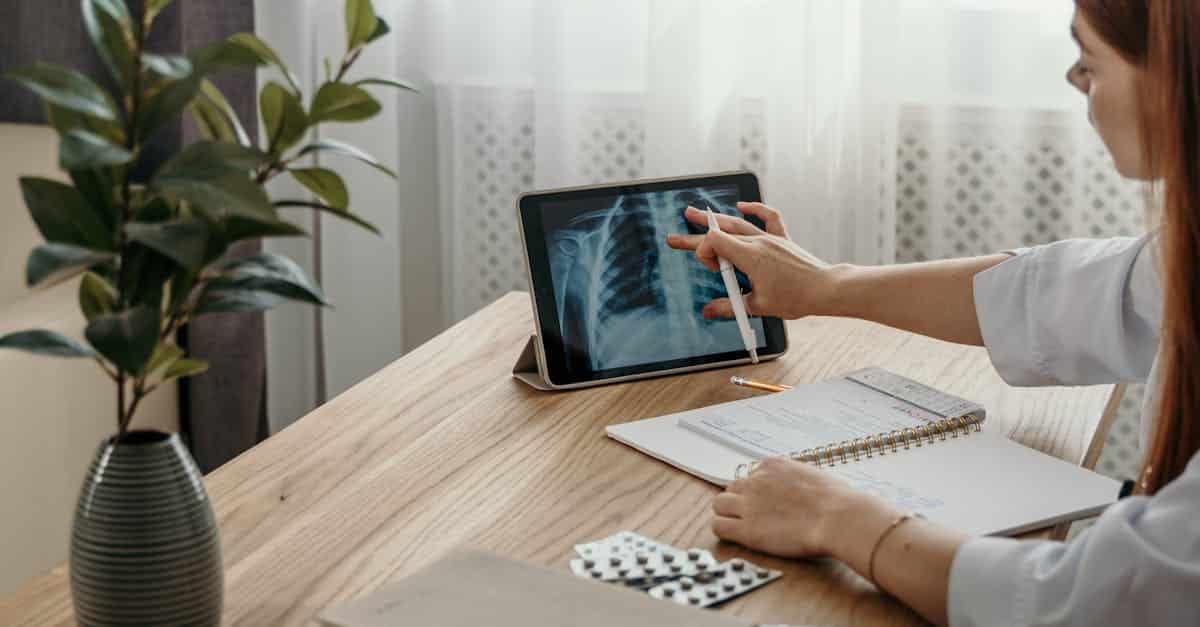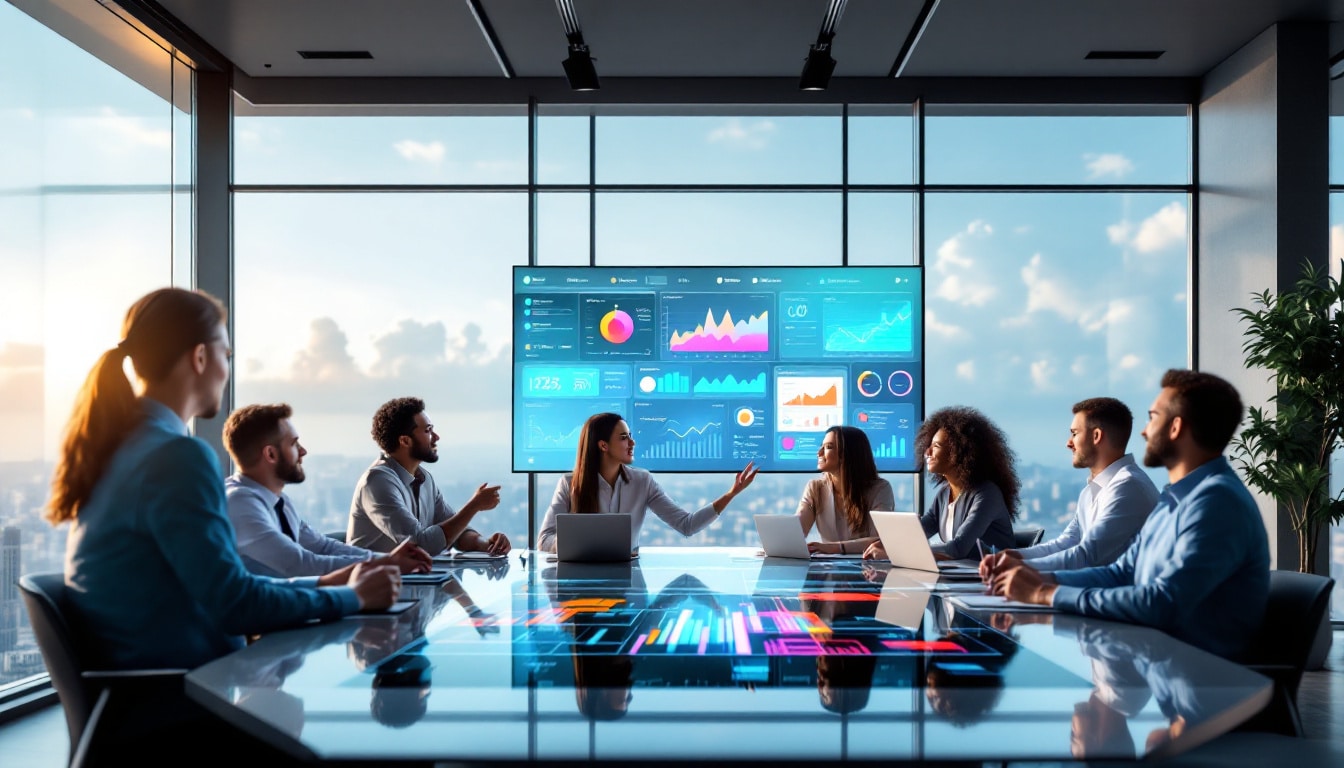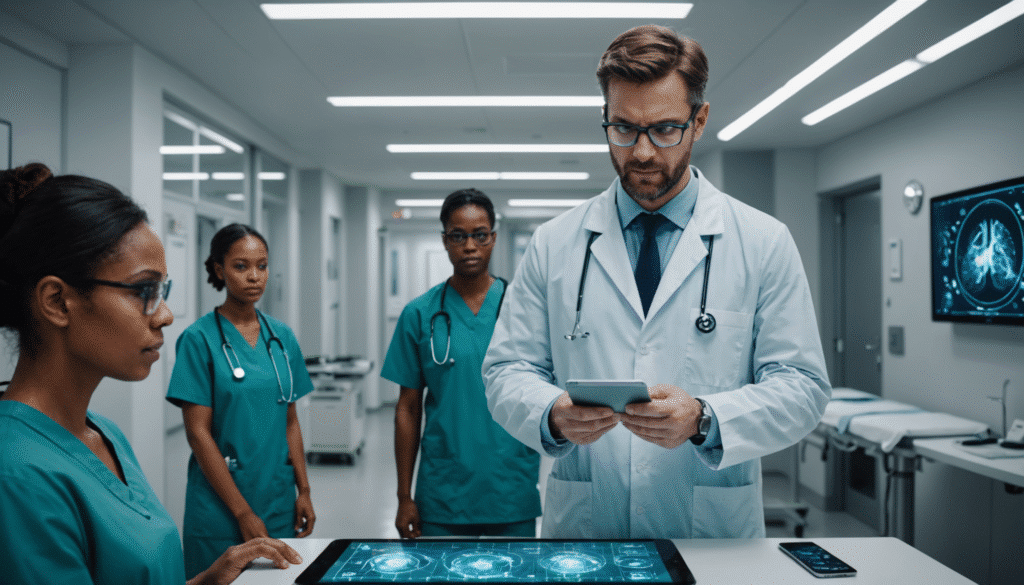Telemedicine presents itself as an effective response to the challenges of monitoring elderly patients, providing significant advantages in their care journey. Thanks to this approach, patients can benefit from easier access to care, thus reducing often painful travel. Teleconsultation and tele-expertise offer continuity of care, essential for this fragile population. These devices not only provide quality care, but also optimize costs, both for patients and for health insurance. By integrating remote monitoring into care, it becomes possible to ensure close monitoring of the health conditions of seniors, while respecting their comfort and autonomy.

There telemedicine represents a significant advancement in the healthcare sector, offering innovative solutions to improve the medical care patients, particularly for older populations. With the aging of the population, it becomes essential to adapt health services to the specific needs of older people in order to ensure effective and quality follow-up. Telemedicine presents itself as an appropriate response to these challenges, allowing simplified access to care while ensuring the continuity and quality of treatments.
One of the main benefits of telemedicine lies in its ability to enable easier access to care. For older patients, often facing mobility issues or chronic illnesses, getting to a medical appointment can be a major obstacle. Thanks to telemedicine tools, these patients can consult their doctor from home, which minimizes the necessary travel and reduces the resulting fatigue and stress.
In addition, telemedicine promotes remote monitoring, an essential tool for monitoring chronic diseases. Connected health devices allow healthcare professionals to remotely monitor essential biometric data such as blood pressure, blood sugar level, or heart rate. By integrating these remote monitoring technologies, rapid access to medical expertise is guaranteed, which makes it possible to anticipate complications and adjust treatments in real time.
Furthermore, the teleconsultation offers elderly patients easier continuity of care. The patient-doctor relationship is essential to guarantee adherence to treatment and the general well-being of the patient. Video or audio calls allow you to maintain a direct and personal connection, even remotely, which helps to strengthen therapeutic relationship. Doctors can examine the patient, ask questions and provide recommendations while listening to their concerns.
Another considerable advantage of telemedicine is the time saving. For patients who must juggle multiple medical appointments, centralizing these consultations through digital platforms can significantly reduce the time spent traveling. This also allows for better time management, both for the patient and for healthcare professionals.
In terms of costs, telemedicine also represents significant savings. Reducing travel for patients limits transportation costs and, therefore, the financial impact related to health. Additionally, for health systems, telemedicine can also lead to savings, optimizing medical resources and reducing emergency consultations linked to inadequate follow-up.
A significant aspect of telemedicine also lies in its ability to improve the early detection alarming symptoms in elderly patients. By implementing remote monitoring systems, it becomes possible to quickly identify health problems that could develop into critical situations. This proactive monitoring is particularly important in the management of geriatric diseases, where rapid intervention can make the difference.
Tele-expertise allows doctors to collaborate effectively through remote consultations between health professionals. This promotes the exchange of information on complex cases and allows specialist doctors to provide their expertise quickly, without the patient having to travel. This multidisciplinary collaboration is crucial for monitoring patients with comorbidities or complex pathologies linked to aging.
In order to guarantee the success of telemedicine, it is essential to ensure the training of health professionals as well as the appropriation of new technologies by elderly patients. THE telemedicine platforms should be user-friendly and accessible, taking into account the varying digital skills within this population. Numerous training initiatives aimed at familiarizing older people with these tools are emerging, facilitating their use and thus increasing the effectiveness of consultations.
It is also important to consider the ethical and legal issues related to telemedicine. The protection of personal data and the security of medical exchanges must be major priorities to guarantee patient trust. A clear and appropriate legal framework is necessary to govern these practices and protect the rights of patients while allowing optimal management of their medical information.
Finally, telemedicine is an innovative solution not only for the regular monitoring of elderly patients, but also for medical emergency situations. Telemedicine platforms are capable of providing immediate access to doctors, thus allowing rapid and appropriate care even in health emergency contexts. This gain in responsiveness is crucial for seniors who, due to their often fragile health condition, require special attention.
Data collected from telemedicine should also be used to improve care protocols. Analyzes on health patterns, patient behaviors and the impact of remote treatments can contribute to the evolution of best practices in geriatric health. Ongoing studies are evaluating the impact of telemedicine on the quality of care and improving satisfaction of elderly patients.
Finally, there is real interest in the integration of advanced technologies such as medical nanotechnology and the digital therapies in the context of telemedicine. These technologies could reinforce the beneficial effects of telemedicine, by allowing even more precise monitoring and personalization of treatments adapted to the individual needs of elderly patients. Research and development in this area contribute to the development of new applications which must be encouraged to optimize the quality of care provided to the elderly.
In the quest for a better quality of life for elderly patients, it is undeniable that telemedicine provides concrete and adapted solutions. Improving access to care, remote monitoring, continuity of care, saving time and maintaining a strong human bond between the patient and the healthcare professional are all assets that strengthen the importance of this practice. Challenges remain, particularly around training, data security and the integration of emerging technologies, but the potential benefits for older patients are indisputable.
For a greater understanding of the issues surrounding telemedicine and the innovations currently underway, several resources can be consulted. Among them, recent articles and studies dealing with the management of chronic diseases in general medicine, innovations in nanotechnology and digital approaches to mental health can shed light on the relevance and future of telemedicine. To explore these themes in more depth, do not hesitate to consult the following links: New protocols for monitoring chronic diseases in general medicine, Medical nanotechnology: innovations and applications, Digital therapies: how technology is revolutionizing mental health, And Innovative approaches for chronic pain management in primary care.

Benefits of telemedicine for monitoring elderly patients
Telemedicine represents a significant advance in the field of health, particularly for the monitoring of elderly patients. By facilitating access to care and improving coordination between healthcare professionals, this innovative approach contributes to more efficient care, while reducing the need for travel that is often difficult for seniors. Explore the main benefits of telemedicine in geriatric health.
Improved access to care
Telemedicine helps overcome the geographic and logistical barriers that elderly patients often face. By offering remote consultations, healthcare professionals can easily interact with their patients, regardless of their location. This is particularly beneficial for those living in rural or isolated areas, where access to specialists may be limited. Telemedicine thus offers a valuable opportunity to ensure that every elderly patient can benefit from adequate assessment and follow-up.
Reduction of travel
Frequent travel to healthcare facilities can be a real challenge for older people due to their often reduced mobility. Thanks to telemedicine, consultations can take place from the comfort of their home, thus limiting the fatigue and stress associated with travel. This approach also helps avoid risks associated with travel, such as falls or exposure to infections in waiting areas.
Regular monitoring and remote monitoring
Telemedicine facilitates the regular monitoring of elderly patients through the implementation of remote monitoring systems. These devices collect medical data in real time, such as blood pressure, blood sugar or other vital parameters. Doctors can thus proactively monitor the progress of their patients’ health, allowing them to react quickly if necessary and adapt treatments accordingly.
Improved continuity of care
Telemedicine helps to guarantee better continuity of care in the event of multi-professionalism. Elderly patients often suffer from several pathologies requiring the intervention of different specialists. Thanks to teleconsultation platforms, it becomes easier for doctors to coordinate care between them, thus promoting consistent monitoring. This also allows each healthcare professional to consult the medical history instantly, thus improving the quality of care.
Reduction in healthcare costs
Telemedicine can lead to a significant reduction in healthcare costs for elderly patients. By reducing the need for physical consultations, this practice limits transportation costs and other travel-related costs. Furthermore, by facilitating preventive management of pathologies, it can avoid costly hospitalizations due to untreated complications. Thus, the financial burden on patients and the health system can be reduced.
Improved accessibility for healthcare professionals
Telemedicine also allows healthcare professionals to better manage their time and improve their efficiency. Through remote consultations, doctors can treat a larger number of patients, while avoiding the long wait times often present in traditional consultations. This strengthens their ability to meet the growing needs of the elderly population, ensuring a better level of care for all.













